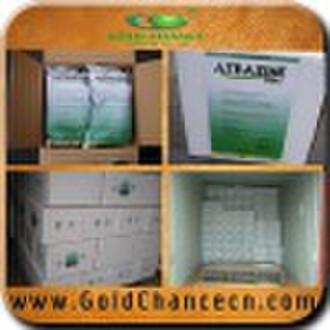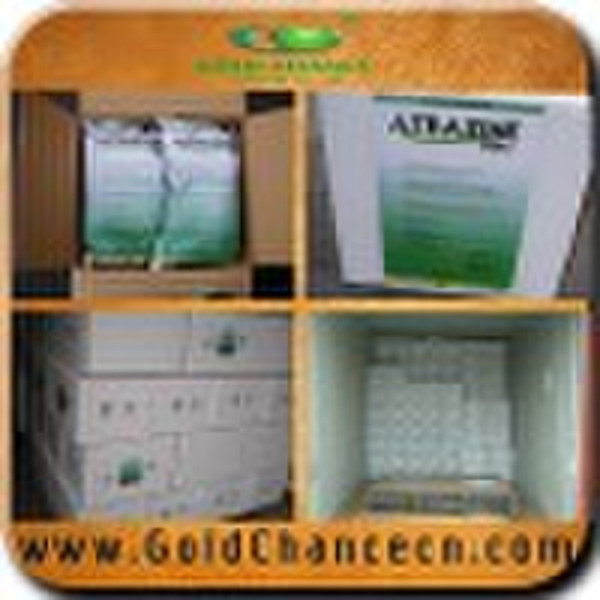Catalog
-
Catalog
- Agriculture
- Apparel
- Automobiles & Motorcycles
- Beauty & Personal Care
- Business Services
- Chemicals
- Construction & Real Estate
- Consumer Electronics
- Electrical Equipment & Supplies
- Electronic Components & Supplies
- Energy
- Environment
- Excess Inventory
- Fashion Accessories
- Food & Beverage
- Furniture
- Gifts & Crafts
- Hardware
- Health & Medical
- Home & Garden
- Home Appliances
- Lights & Lighting
- Luggage, Bags & Cases
- Machinery, Hardware & Tools
- Measurement & Analysis Instruments
- Mechanical Parts & Fabrication Services
- Minerals & Metallurgy
- Office & School Supplies
- Packaging & Printing
- Rubber & Plastics
- Security & Protection
- Service Equipment
- Shoes & Accessories
- Sports & Entertainment
- Telecommunications
- Textiles & Leather Products
- Timepieces, Jewelry, Eyewear
- Tools
- Toys & Hobbies
- Transportation
Filters
Search
Atrazine 80% WP

Diego Ge
Contact person
Basic Information
| Classification | Fungicide |
|---|---|
| CAS No. | 1912-24-9 |
| Place of Origin | Jiangsu China (Mainland) |
Atrazine 80% WP agrochemical herbicide Atrazine Common name: Atrazine Chemical name: 6-chloro-N-ethyl-N-(1-methylethyl)-1,3-5-triazine-2,4-diamine Chenmical class:1,3,5-triazine CAS No.: 1912-24-9 Properties: White crystalline solid. M.p. 175.8. B.p. 205.0. V.p. 3.85×10-2 mPa (25). Density 1.23 (22). In water 33mg/L(pH 7, 22). In ethyl acetate 24, acetone 31, dichloromethane 28, ethanol 15, toluene 4.0 (all in g/L, 25). Relatively stable in neutral, weakly acidic and weakly alkaline media. Rapidly hydrolysed to the hydroxy derivative in strong acid and alkalis, and at 70 in neutral media. Toxicity: Acute oral LD50 for rats 1869-3090 mg/kg, mice > 1332-3992 mg/kg. Acute percutaneous LD50 for rats > 3100 mg/kg. Mild skin irritant; non-irritating to eyes (rabbits). Skin sensitiser in guinea pigs, but not in humans. Inhalation LC50 (4 h) for rats > 5.8 mg/L. Ecotoxicology: Acute oral LD50 varies from 940 mg/kg for bobwhite quail to > 2000 mg/kg for mallard ducks and 4237 mg/kg for adult Japanese quail. Dietary LC50 (8 d) for Japanese quail > 5000 mg/kg. LC50 (96 h) for rainbow trout 4.5-11.0, bluegill sunfish 16, carp 76, mg/L. Daphnia LC50 (48 h) 6.9 mg/L. Algea EC50 (72 h) 0.043 mg/L. Bees LD50 (oral) > 97 μg/bee, (contact) > μg/bee. Environmental fate: In animals, following oral administration, atrazine is rapidly and completely metabolised, primarily by oxidative dealkylation of amino group, and by reaction of the chlorine atom with endogenous thiols.Diaminochlorotriazine is the main primary metabolite, which readily conjugates with glutathione. More than 50% of the dose is eliminated in the urine and around 33% in the faeces within 24h. In tolerant plants, atrazine is readily metabolised to hydroxyatrazine and amino acid conjugates, with further decomposition of hydroxyatrazine by degradation of the side-chains and hydrolysis of the resulting amino acids on the ring., together with evolution of CO2. In sensitive plants, unaltered atrazine accumulates, leading to chlorosis and death. Major metabolites under all conditions are desethylatrazine and hydroxyatrazine. Mode of action: Selective systemic herbicide, abdorbed principally through the roots, but also through the foliage, with translocation acropetally in the xylem and accumulation in the apical merstems and leaves. ATRAZINESpecification400SCAppearance:Off-white suspensionA.I content400±20g/LpH value5-8Water (%):0.2maxWet sieve test (44μm,%):99minSuspensibility (%):90min
Payment term
Letter of credit
Telegraphic transfer
-
Payment Methods
We accept:









